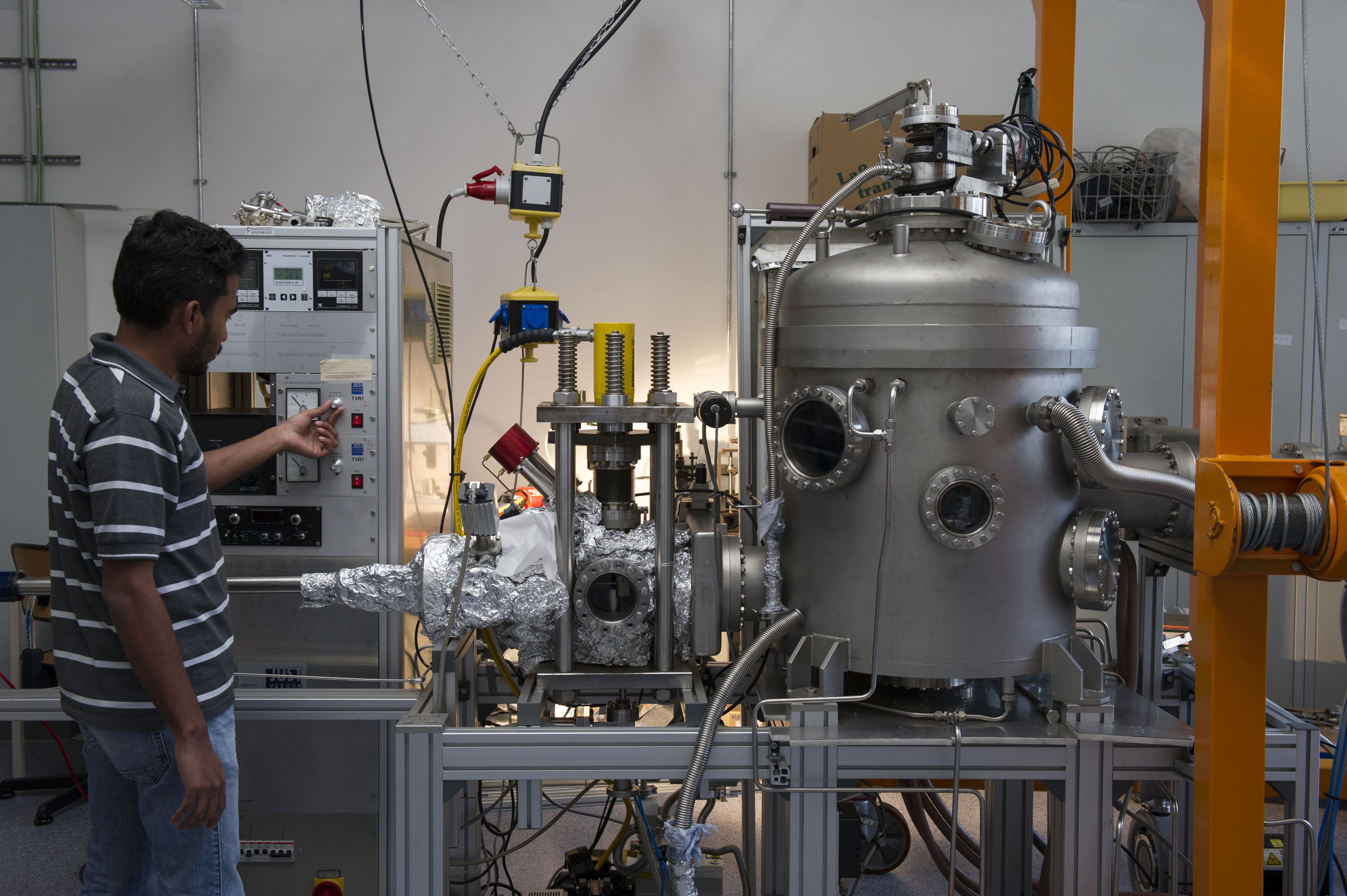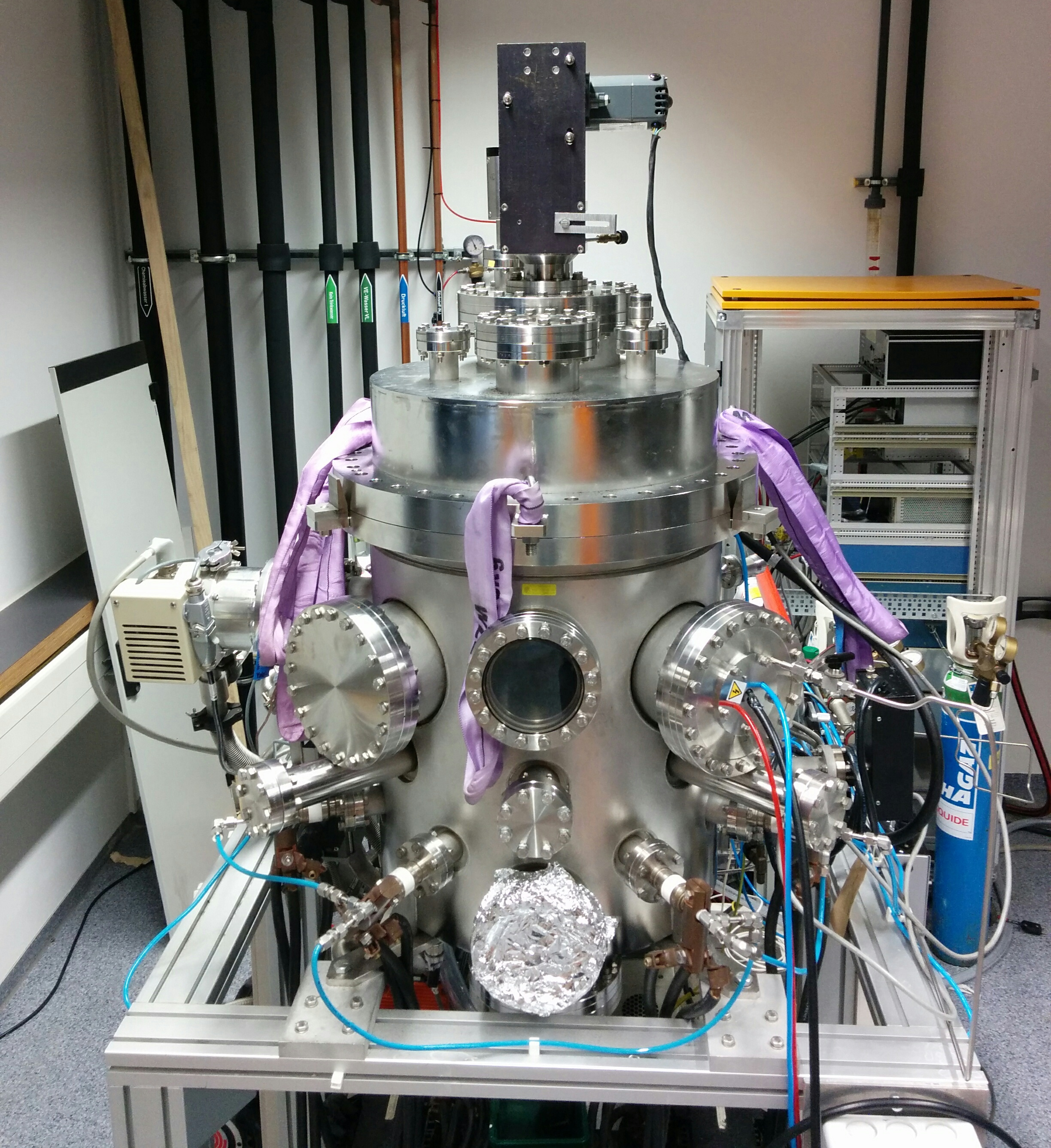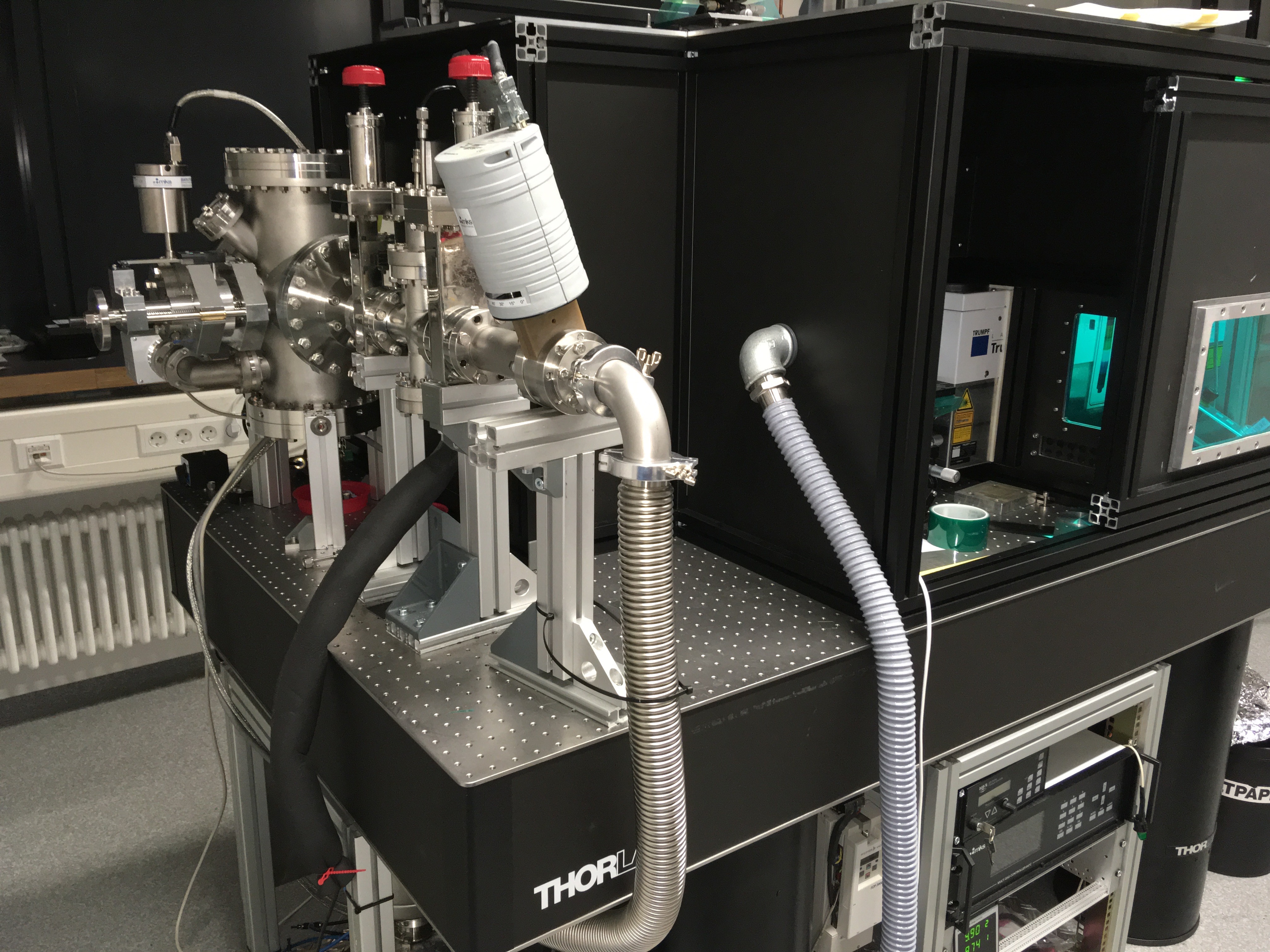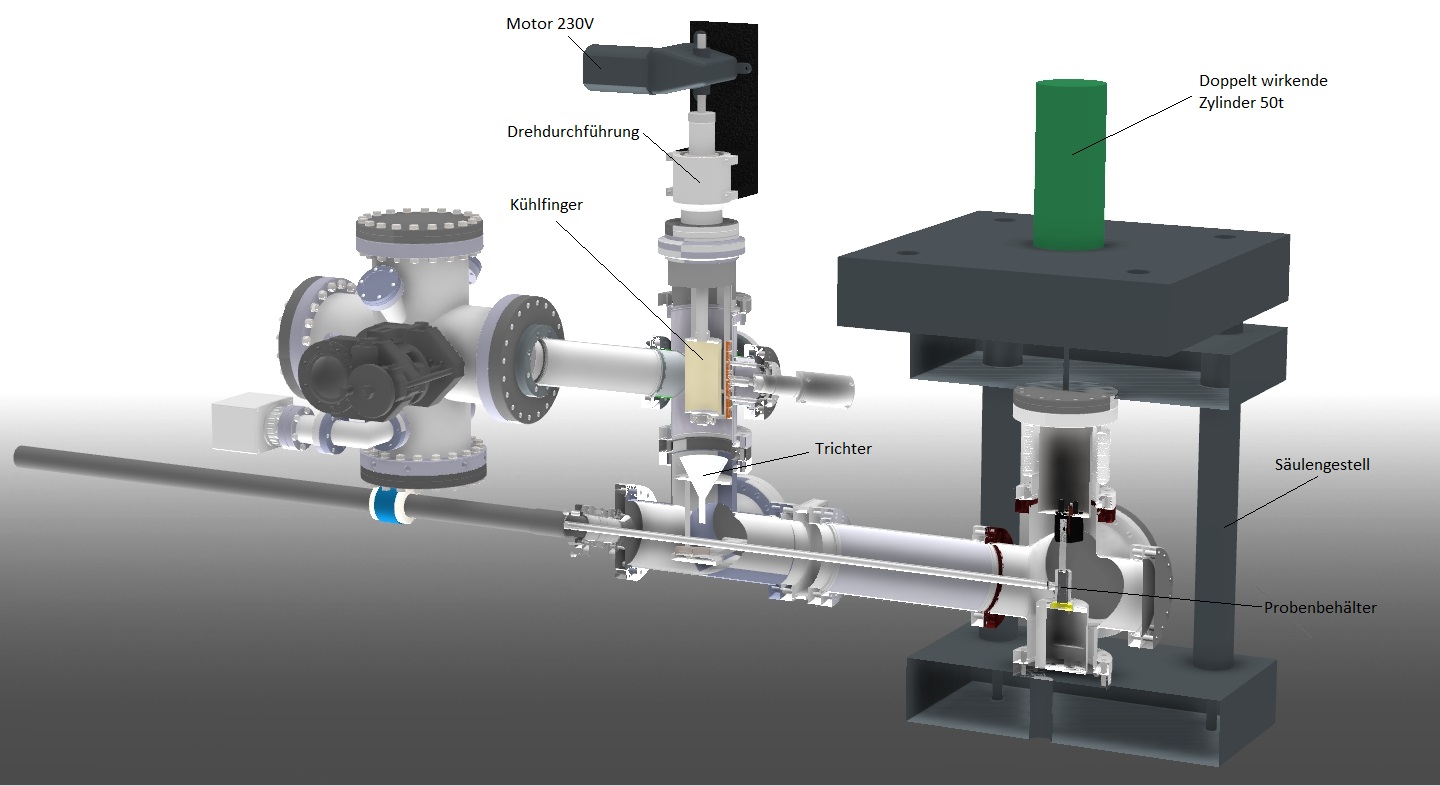Inert-gas Condensation Equipment
The technique of inert-gas condensation (IGC) consists of evaporating, sputtering or ablating a material inside a chamber that is evacuated to a vacuum pressure of about 10-8 mbar and then back-filled with a low-pressure inert gas like helium. The material atoms collide with the gas atoms inside the chamber, lose their kinetic energy, and condense in the form of small particles. The condensed particles are collected on a cold finger and the deposit is scraped off into a compaction unit. The scraping and compaction processes are carried out under ultra-high vacuum conditions to maintain the cleanliness of the particle surfaces and to minimize the amount of trapped gases. The inert gas condensation method produces equiaxed crystallites. The crystal size of the powder is typically a few nanometers and the size distribution is narrow. The crystal size is dependent upon the inert gas pressure and temperature, the evaporation/sputtering/ablation rate, and the gas composition.
A wide class of metals and alloys can be processed by IGC technique as well as oxides, nitrides, carbides, etc. using a corresponding gas atmosphere. Recently, a new class of non-crystalline solids – nanoglasses - has been achieved by condensation of nanosized amorphous particles and their subsequent compaction at high applied pressure of a few GPa.
Thermal-evaporation inert gas condensation

Contact Person: Harsha Nandam
Description:
Thermal evaporation is the most popular technique due to its easy handling and good yield. Several pure nanocrystalline metals like Cu, Au, Pd, Ni, Fe etc., can be synthesized with a narrow particle size distribution between 5-20 nm. Gas pressure and temperature can be varied to vary the particle size in thermal evaporation technique. Alloys with different vapor pressures of constituent elements are difficult to make by thermal evaporation in IGC which limits the applicability of this technique.
Magnetron-sputtering inert gas condensation

Contact Person: Harsha Nandam
Description:
Magnetron sputtering is employed in inert gas condensation because elements with different vapour pressures can be synthesized with good compositional homogeneity. Also, metals with very high melting point like Mo and oxides like ZrO2 can be synthesized by magnetron sputtering which are very difficult to synthesize in thermal evaporation. Unlike traditional sputtering of thin films in which the sputtering is done at very low pressures (in the order of 10-3 mbar), pressures of the order of 10-1 mbar are employed in IGC to synthesize nanoparticles. Unlike thermal evaporation, one cannot change the gas pressure to change the particle size in magnetron sputtering which is an obvious limitation in the synthesis technique.
Pulsed-laser-ablation inert gas condensation


Contact Person: Ananya Baksi, Soumabha Bag
Description:
This technique consists of ablation of a material by means of pico-second pulsed laser irradiation in a vacuum chamber (base pressure 10-7 mbar) under a flow of inert gas such as helium and argon. The ablated atoms condense into clusters or nanoparticles, which are continuously collected on a liquid nitrogen cooled collection device. A wide range of nanopowders of metals, metallic alloys, semiconductors, and metal oxides can be synthesized by this method.
In order to process the synthesized materials without exposing to air, the system is being modified with an in-situ powder collection/compaction unit.
